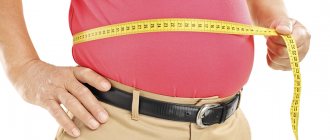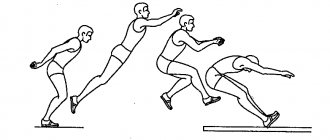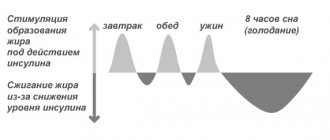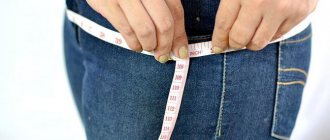In the world of gadgets and fitness, accuracy and regularity are important factors. Many people acquire special devices to track their activity. But for a more accurate picture, each owner of such a gadget needs to configure it to their individual parameters. Among other things, you need to measure your stride length. And in this article I will tell you how to do this in 5 ways.
What is average stride length
This is a very important point, since manufacturers understand different things under the same name.
This concept can be understood as:
- The distance from the heel of one foot to the heel of the other while walking , that is, traveled forward by one foot. The average you'll see in many places is 0.67 meters for women and 0.762 meters for men, but it really depends on height.
- The distance traveled by the heel of one foot until the next step, when the same foot touches the ground . In other words, it will be two steps, since during this time the other foot also touched the ground once.
If you set your pedometer to your stride length and find that the distance seems half as long, read the instructions again. You may need to enter the length, which is two steps.
This can also work in the opposite direction: instead of the length of two steps, one had to be entered. You can understand this if the distance traveled seems to you twice as large as the actual one.
Another important nuance: when you walk quickly, your stride length is shorter than when you are not in a hurry. While running – even less.
The numerical value of this parameter varies depending on whether you are walking or running, whether you are on a hill or on uneven paths, whether you are carrying something heavy or walking lightly, whether there is snow under your feet or a flat path, whether it is windy or calm outside, whether you are tired or cheerful and cheerful.
Now let's move on to answering the main question of the article.
You can measure your stride length in different ways:
- growth assessment;
- wet trace method;
- short walking distance;
- football field score;
- using online maps.
How to determine the speed of running, walking and distance traveled?
Walking and running are divided into several types depending on the dynamics and pace.
For example, walking is of the following types:
- walking;
- with an average pace;
- health;
- sports.
The first walking option resembles a walk. It has a low speed, short stride and a slow tempo. In this case, a person takes about 50-70 steps per minute at a speed of 4 km/h. The pulse rate is approximately 70 beats per minute. Since there is no physical activity during walking, this type of walking is not considered healthy.
Moving at a medium pace implies a wide gait. A person takes 70-90 steps per minute at an approximate speed of 4-6 km/h.
A higher pace is typical for recreational walking. At the same time, the speed reaches 7 km/h, and the number of steps per minute is 70-120. During movement, your heart rate increases, which improves blood circulation.
When race walking, which has a certain technique, a person strives to achieve great speed, but at the same time he should not run. Also, the flight phase is not allowed, and one foot is supported on the surface. A professional is able to move at a speed of 16 km/h, his pulse increases to 180 beats per minute. Race walking is considered beneficial for your figure.
The distance traveled by a person in a day depends on his lifestyle. This is usually related to the type of activity, such as sedentary or dynamic work. According to doctors' recommendations, a pedestrian needs to take 10,000 steps a day.
When a person runs, the capillaries are filled with blood, which helps improve the body's condition. Depending on the distance, running can be on the spot or it involves covering short, medium and long distances.
Running in place is less effective than running. It is suitable for any conditions, so you don’t need a stadium to move around, you can confine yourself to a small space.
You don't need a certain amount of endurance to run short distances. The essence is the runner's dedication to quickly reach the finish line.
The average distance ranges from 600 meters to 3 km. The pace of movement should be slightly above average.
The long distance is from 2 miles to 42 km. Jogging is appropriate here.
Depending on the speed, running is divided into types:
- easy;
- with an average pace;
- jogging;
- sprint
Light running resembles walking. In this case, the movement speed is about 5-6 km/h. This kind of running is useful for those who are overweight and for older people.
The average pace is suitable for morning runs. The speed is 7-8 km/h.
Jogging is used for medium and long distances; it has a beneficial effect on the health of the body.
Sprinting achieves maximum speed and is suitable for short distances of approximately 200 metres.
The easiest way to find out your walking or running speed is to use a treadmill.
Another option for determining speed is arithmetic calculations. Having measured the length of the desired section, you should note the time of movement from one point to another. For example, a person ran a distance equal to 300 m in 3 minutes. You need to divide 300 by 3, you get the distance covered in a minute equal to 100 m. Next, 100 m * 60 minutes = 6000 m. This means that the person’s speed is 6 km / h.
Score by height
This can be done using the formula:
Height/4+0.37
For correct calculations, all numbers must be converted to one measurement, for example, to meters. In total, we find that if a person is 1.6 m tall, his step length is (1.6/4) + 0.37 = 0.77 m.
This method is used in the automatic settings of many pedometers and activity trackers. To determine stride length:
- women: height (in cm) * 0.413;
- men: height (in cm) * 0.415.
For example, if you are a girl with a height of 1.65 m, then we get 165 cm * 0.413 = 68 cm.
If height is used to determine stride length, a rough estimate is obtained. It is not personalized. In any case, it is better to double-check your results using other methods listed below.
How to measure the average length of your step: popular methods
A person's stride length varies from person to person and can be measured in several ways:
- The most accurate result can be obtained by walking ten even steps and measuring the distance. Then divide it by 10. Usually you get 65-75 cm.
- You can simply measure the distance between the heels of your feet by taking a step. You will receive an approximate length.
- The dependence of step length on human anthropometric parameters is known. Based on this, you can determine the length, knowing your height. The latter’s indicator in centimeters must be divided by 4 and added 37. For example, with a height of 180 cm, we use the following formula: 180/4+37. The result is 82. 82 cm - this is the length of a person’s step based on height.
Wet trace method
To calculate step length this way you will need:
- Street;
- shoes;
- puddles or bucket of water;
- roulette.
It is very convenient to take measurements after rain, when there are puddles on the ground. Alternatively, you can fill a bucket with water at home and take it with you outside.
The algorithm of actions is as follows:
- Walk through a puddle or spilled water on the asphalt until your entire sole is wet.
- Then get out of the puddle and take a few steps.
- Using a tape measure, measure the distance from the wet mark of one heel to the mark of the other.
- Record on a piece of paper the values of all segments from the tracks obtained while walking and calculate the arithmetic mean.
- The final number is the distance one leg travels forward. That's what we needed to know.
You can also walk along a wet beach and use your foot prints to calculate the desired parameter. The algorithm of actions is the same.
Walking shoes
It is very important to choose the right shoes. Sneakers are, of course, best for walking. Choose them carefully, making sure that the heel is tightly fixed.
Sneakers must bend well in their middle part, this makes walking easier.
Well, one more important detail - walking shoes must have a shock absorber. Therefore, when purchasing, if you are not sure of all these qualities, it is better to consult with the seller and explain that you need sneakers specifically for walking.
Short walking distance
You can use this method even at home:
- Measure and mark a specific distance, for example 10 meters.
- Walk at your walking speed and count the number of steps it takes to cover that distance.
- Divide the meters by the resulting number. The final figure is the length of your step.
Walking can be different
Active movement promotes weight loss, and the simplest form of physical activity is walking. It speeds up the weight loss process in the following ways:
- calorie consumption increases;
- metabolic rate increases;
- the blood is saturated with oxygen;
- fat breakdown processes are stimulated;
- muscles are strengthened, which also burn energy.
Walking is recommended for people who are overweight, have problems with the cardiovascular system and joints. This load allows you to burn calories and carefully prepare your muscles for more complex exercises.
Walk and lose weight
The process of losing weight starts with a calorie deficit, when more energy is expended than is received. A calorie deficit can be achieved in several ways simultaneously:
- reducing the calorie content of the daily diet;
- increasing energy consumption.
Walking at a relaxed pace without nutritional adjustments will not have a significant impact on weight loss. Taking 10,000 steps every day at different paces will burn different amounts of calories. To achieve serious achievements and burn enough energy, you need to calculate how much distance traveled per day will create an effective calorie deficit.
Energy costs when walking
Calorie consumption when walking is calculated using the formula:
weight (kg)*distance (km)*0.5=energy expenditure (kcal)
For example, a person weighing 60 kg, walking a distance of 1 km, will burn 30 kcal. Following this formula, when covering a distance of 2 km, 60 kcal are consumed, 5 km - 150 kcal.
Converting distance to number of steps (for a person with a step length of 80 cm, weighing 80 kg)
| Distance | Number of steps | Energy consumption |
| 100 m | 125 | 4 kcal |
| 1 km | 1250 | 40 kcal |
| 8 kilometers | 10 000 | 320 kcal |
Based on the table, a person weighing 80 kg with a step length of 80 cm, having walked 1,000 steps, will cover a distance of 0.8 km and consume 32 kcal, 6,000 steps per day - respectively, 7.5 km 300 kcal. A distance of 10,000 steps burns 320 calories.
Using online maps
Use Yandex or Google maps to draw and measure your walking route.
Knowing the exact distance between points A and B, you need to walk it at your usual speed, counting your steps. And at the end, divide the distance by the resulting amount.
For example, walking a hundred meters in 150 steps, we have: 100 / 150 = 0.67 m = 67 cm - the average length of your step. For fun, compare the result with the readings of your pedometer.
You can also use GPS-based walking apps on your mobile phone, but they often show 10% less than other measurement options.
Analysis of frequency and stride length using the example of elite 10,000m runners
Analysis of frequency and stride length using the example of elite 10,000m runners
The formula for speed is simple = stride length + cadence. 10,000m race at the World Championships in Osaka
The equation is quite primitive, simple and understandable even to a first-grader, and explains from the point of view of biomechanics the mechanism for changing running speed.
That is, to get an increase in speed, you need to either increase the step length, or increase the frequency, or change both values. The bottom line is that something has to change.
Let's try to understand, using live examples, what actually changes when our running speed increases.
If you are a Chi-Running cultist, then only your step length will change, since the founder of the system, Danny Dreyer, preaches a constant frequency of steps, changing only their length. In the real world, consciously not changing one of the parameters, but changing only the second is committing a gross mistake. Let's track the variation of these parameters using the example of elite runners.
One study [1] analyzed the frequency and stride length of the winner and medalists in the 10,000m race at the World Championships in Osaka in 2007.
The winner of this race was (naturally) Kenenisa Bekele - 27:05.90; second place went to Sileshi Sihine, who was always second in that period – 27:09.
03; and Kenyan Martin Mathathi left Osaka with bronze - 27:12.17.
Attention!
The figure below shows the running speed, frequency and stride length for each athlete on each lap.
The first thing that catches your eye is the running speed - in the first 23 laps it is almost the same for all three athletes, although this is an obvious fact. However, each of the three maintained their running speed with their own strategy.
Bekele had the lowest running frequency and therefore the longest distance in the first 9000m. The complete opposite was Matati, who ran in short steps, but very often in order to maintain the same speed.
Sihine's stride length and frequency were average compared to Bekele and Matati.
An interesting fact is that Bekele, having the smallest height (160cm) among the World Championship medalists, demonstrates the longest stride length compared to the taller Sikhine (171cm) and Matati (167cm).
Graphs of frequency, stride length and speed of medalists in the 10,000m race
The most interesting changes in step length and frequency begin at the 10th kilometer of the race, when the speed increases sharply. After an average pace of 2.42-2.45 min/km in the first 9 km, the finishing kilometer for the winners was 2.30, 2.33 and 2.36 min/km, respectively, and the finishing lap was 55.51, 58.66 and 62.16 seconds, respectively. Let's take a look at what indicators have increased everyone's speed?
Bekele increased his finishing speed by increasing his stride frequency from 190 to an incredible 216 strides per minute, while maintaining his stride length.
Sileshi Sikhine, three laps before the finish, slightly increased his step frequency, and on the last lap he significantly increased his stride length, due to which his speed increased significantly - the exact opposite of Bekele.
Important!
And finally, Matati, who ran using a high frequency and a short stride, increased his stride length by a third 3 laps before the finish, thereby gaining an increase in speed. But what’s most interesting is that in the last two laps, Matati even lowered his stride frequency a little, trying to compensate for this with a long stride.
Judging by the video recording, he was simply “stunned”, due to which he was unable to maintain the running frequency.
Bekele, Sihine and Matati on the course
As a result, on the last lap he was only able to maintain speed, unlike Bekele and Sihine.
Note that each of the three runners chose their own strategy for maintaining speed during the distance, and in the same way, their own strategy for increasing speed during the finishing spurt.
The interesting thing is that at the finish line, everyone increased the indicator that was low during the distance. Bekele sharply increased the frequency of steps at the finish, and Matati - the length.
Sikhine spurted due to a slight increase in both factors.
It seems that the runners subconsciously relied on only one indicator during the distance, as if allowing the second one to “rest” for most of the race in order to sharply increase it at the finish.
But, as we see, the surest strategy for a quick finish is to increase your step frequency.
What conclusions can be drawn based on the above?
What can I say about this? — Based on my own long-term observations of the best endurance runners in our country, I can notice that our stayers and average athletes have perfect stride length, but frequency, or rather the ability to develop it, is the weak link.
If we turn to theory, then every movement begins with an electrical impulse arising in the brain, which travels through the nerve canals to the spinal cord, and from there to the muscle fibers, causing them to contract.
That is, with the help of the brain (or central nervous system) we regulate and control the movements we need. However, there are also movements that we do automatically, without thinking about them.
On the subject: Is it possible to exercise on a treadmill if you have varicose veins?
For example, simple walking, during which we can do several other things at the same time, without loading the central nervous system with controlling walking.
Advice!
This happens because we have brought walking to automaticity, this is when the highest level of control (CNS) assigns this task to the lower level (autonomic nervous system). But remember, to bring walking to automaticity, how many times did the child have to fall?
If we draw an analogy with running, then the task of increasing the frequency of steps is to practice it REGULARLY, even during a slow cross-country.
I have watched more than once masters of sports who deliberately prance during a cross-country race, prolonging their stride. But to answer the question “why are you doing this?” Probably not everyone is ready.
By constantly working on the frequency, each time it becomes easier for our nervous system to generate nerve impulses, causing the muscles to contract more often.
Source: https://runnersclub.ru/blogs/running-mind/razbor-chastoty-i-dliny-shaga-na-primere-elitnyh-begunov-na-10-000m
How much should you walk a day?
We have already said: to be healthy, you must play sports. And the simplest and most accessible form of it is walking. We tried to calculate how many steps there are in 1 kilometer (as you know, there are 1000 meters, and there should be approximately the same number of steps). However, the question immediately arises about how many kilometers you need to walk a day in order not to have health problems. The 10,000 steps rule is quite popular. This norm came to us from Japanese everyday life. However, questions arise again. And if a person ate a hamburger or ice cream, should this norm be increased? Or can I leave it the same?
In fact, this figure came to us from ancient times, when the Japanese moved much more on foot, and their diet was much healthier. Therefore, this was only a guideline for a healthy lifestyle. Today, doctors are faced with the fact that for many people walking even 2000 steps a day becomes problematic. It is for these people that the desire to cover a little over eight kilometers every day is most significant. The bar should be raised gradually so that there is no temptation to quit this venture.
Steps when running and walking
The measure of step length when walking and running may differ for the same adult. The main feature of the running step that distinguishes it from walking is the presence of a flight phase, which is not allowed in race walking. Beginning athletes often use a walking stride when running, but this significantly reduces the effectiveness of their training. The running step does not involve braking and reduces impact forces. Due to this, the risks of injuries to muscles, ligaments, joints and muscles are reduced.
More on the topic “Which pedometer to choose”:
What phone pedometer do you use?
Weight loss and diets. How to get rid of excess weight, lose weight after childbirth, choose a suitable diet and communicate with those who are losing weight. I downloaded a pedometer to my new phone.
Does anyone
Errors and correct option. Inhale through your nose after two steps and exhale through your mouth on the fourth step. To the content. Warm-up before Nordic walking classes. Pedometer and heart rate monitor: how to make the right choice? Pedometers (pedometers) measure the number of steps...
Mom with a stroller and a pedometer :)
Mom with a stroller and a pedometer :). Questions from expectant mothers to “experienced” ones. A child from birth to one year. Care and education of a child up to one year: nutrition, illness, development.
Heart rate monitor
Pedometer and heart rate monitor: how to make the right choice? How not to get lost in electronic diversity? Tell me, please, how much is burned in a 60-minute workout with an average heart rate of 130 with a body of 70 kg? Pedometer and heart rate monitor: how to make the right choice?
did not give out or did not take the assigned
When entering the institute, you need to register, but I don’t remember at what point, in my opinion, after enrollment. 03/13/2014 12:21:22, Yarti. I don’t understand why it’s so difficult for you to pick up >.
Compliment your pedometer
Compliment your pedometer. Help. About yours, about your girl’s. Discussion of issues about a woman’s life in the family, at work, relationships with men.
About vibrators
Users, tell me which one is worth taking? 2. Which crib is better to choose: on wheels, on legs? 3. What are the reviews about Gandilyan (if possible, indicating the model used)?
I bought a pedometer
How is a pedometer useful? Pedometer and heart rate monitor: how to make the right choice? Pedometers (pedometers) measure the number of steps or pairs of steps taken. It puts little strain on the joints (unlike running), but has a beneficial effect on the heart muscle and...
Question about heart rate monitor
Pedometer and heart rate monitor: how to make the right choice? How not to get lost in electronic diversity? Tell me, please, how much is burned in a 60-minute workout with an average heart rate of 130 with a body of 70 kg? Pedometer and heart rate monitor: how to make the right choice?
Heart rate monitor interferes with exercise 
What should I do, exercise and not pay attention to the pulse or reduce the load to almost zero? I saw a cardiologist, did a cardiogram and an ultrasound. Pedometer and heart rate monitor: how to make the right choice? How not to get lost in electronic diversity? Heart rate monitor - where to buy?
now about the heart rate monitor :)
Pedometer and heart rate monitor: how to make the right choice? How not to get lost in electronic diversity? Tell me, please, how much is burned in a 60-minute workout with an average heart rate of 130 with a body of 70 kg? Pedometer and heart rate monitor: how to make the right choice?
who has “smart” heart rate monitors?
Pedometer and heart rate monitor: how to make the right choice? How not to get lost in electronic diversity? How to choose a heart rate monitor? Until the population delved into the nuances of a healthy and athletic life, the only measuring device in the gym was a stopwatch...
For POLAR owners
Pedometer and heart rate monitor: how to make the right choice? How not to get lost in electronic diversity? Tell me, please, how much is burned in a 60-minute workout with an average heart rate of 130 with a body of 70 kg? Pedometer and heart rate monitor: how to make the right choice?
How is a pedometer useful?
How is a pedometer useful? - gatherings. About yours, about your girl’s. Discussion of issues about a woman’s life in the family, at work, relationships with men.
Mechanical or electronic peak flow meter
Tell me, who knows. Which peak flow meter is better for an almost 3-year-old child, electronic or mechanical? Mechanically, the gradation before/after 5 years is confusing, I have no idea...
Help me choose a TONOMETER
Help me choose a TONOMETER. ...I find it difficult to choose a section. Medicine and health. Who can tell? My grandmother (80 years old) needs to buy a TONOMETER. Which one is better to choose?
How to use the tonometer? On your own
Pedometer and heart rate monitor: how to make the right choice? It will allow you to independently choose any set of services, including purchasing air tickets, even if it is several flights, and booking rooms in one or more hotels... What is a good tonometer?











